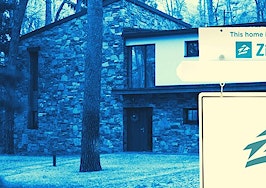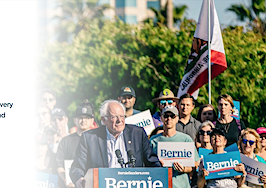Reposted with permission from Mike DelPrete.
Zillow’s drive to dominance in the greater New York City real estate market — via rental listings on StreetEasy and its hyperlocal Hamptons portal Out East — reveals the path to market power of real estate portals around the world.
The path to market power
All real estate portals follow a simple formula for national domination: acquire listings, build consumer traffic and monetize. Comparatively, the first step is easy, the second hard and the third inevitable.

Building a huge consumer audience and achieving traffic dominance — which can take a decade — is the critical step. After that step comes power: The power to monetize, the power to push out competition and the power to force adoption of your platform by recalcitrant customers.
(Upstart portals, such as OnTheMarket in the U.K. and Bomero in Sweden, don’t seem to fully recognize the difficulty of building traffic dominance — frequently believing that “if you build it, they will come.” The importance of acquiring listings is overstated while that of building traffic is understated.)
Battleground New York
Zillow acquired StreetEasy, New York City’s leading real estate portal, in 2013. Four years later, it announced it would begin charging for rental listings: $3 per listing per day. The rationale was that it would enable StreetEasy to “continue to fuel innovation, technology and resources to support a robust rental marketplace,” but it was also the inevitable outcome of achieving listing and traffic dominance in the market.
The pricing change caused a drop in listings — by some accounts, more than half — but StreetEasy still had the most listings and, more importantly, traffic dominance. This dominance allowed StreetEasy to announce a fee increase of 50 percent to $4.50 per listing per day in 2018. And again a year later, in 2019, StreetEasy announced a fee increase to $6 per listing per day.

There’s a fantastic, self-correcting system at play here — call it a free market — where the platform keeps increasing its prices and its customers keep paying, as long as there’s a positive return on investment. While price rises never feel good, it’s hard to argue with, or effectively replace, the advertising reach a portal provides.
Monetization strategies
Real estate portals around the world employ differing monetization strategies. Outside of the U.S., portals act as the de facto MLS (a national database of all properties for sale) and monetize on a pay per listing basis. Within the U.S., Zillow has adopted both pay per listing (StreetEasy rentals) and, where a multiple listing service is already in place, pay per lead (Premier Agent).
Both strategies have their advantages. In some countries, the average revenue per listing can be thousands of dollars, while the price of a lead can range between $50-$100. The U.S. portals, Zillow and realtor.com, are pushing out a new, success-based fee structure in favor of pay per lead (read my analysis here).
Out East
While the battle for rental listings is well-advanced in New York City, the struggle is at an earlier stage for Zillow’s hyperlocal portal in the Hamptons, Out East. Launched in 2018, Out East is in the early stages in the path to market power: acquiring listings and building traffic.
A group of local brokers launched a competing portal, HamptonsRE.com, to challenge the dominance of Zillow and Out East. Although not seriously threatened (HamptonsRE.com only has 1,800 listings versus 2,500 at Out East), it is a critical time in the path to market dominance.
Zillow’s recent decision to move from a pay-per-listing subscription to a free model for agents is a step backward in its monetization journey. But it is only a tactical retreat designed to give Zillow a long-term, strategic advantage. And by allowing agents to post new listings directly — for free — Zillow’s move effectively circumvents the brokerages and handicaps their portal.
Key takeaways
Viewed through a strategic lens, the moves and countermoves in the New York market highlight a number of key takeaways:
- Traffic is king: Once traffic dominance is achieved, there’s really no stopping a portal from moving down the monetization path at will.
- Play the long game: In the Hamptons, Zillow’s power gives it the ability to turn off an existing revenue stream in order to solidify its market position for the long term, with the inevitable monetization coming later.
- Consumer first: An interesting observation: When brokers band together to launch a competing portal, they rarely talk about the consumer. To wit: “The impetus for the site was to create something that’s owned by the brokers.” These are companies launching products that are good for themselves, not consumers.
Mike DelPrete is a strategic adviser and global expert in real estate tech, including Zavvie, an iBuyer offer aggregator. Connect with him on LinkedIn.
Are you ready for what the industry holds in 2020? Inman Connect New York is your key to unlocking opportunity in a changing market. At Connect you will gain insight into the future, discover new strategies and network with real estate’s best and brightest to accelerate your business. Create your 2020 success story at Inman Connect New York, January 28-31, 2020.
Agenda | Speakers | Past Connect Videos
Thinking of bringing your team? There are special onsite perks and discounts when you buy tickets together. Contact us to find out more.







